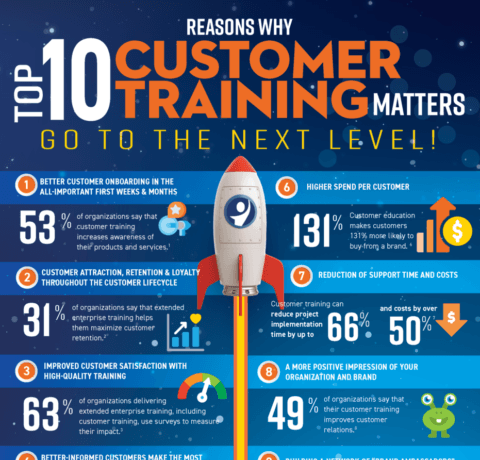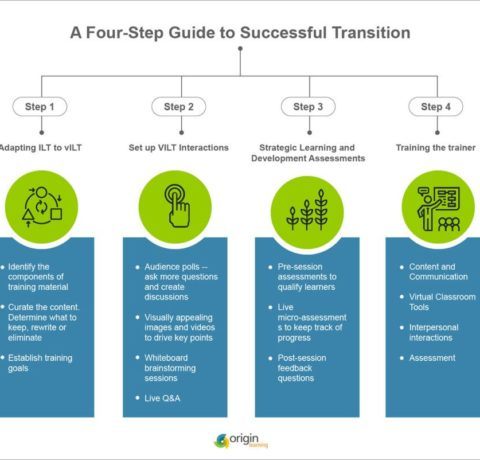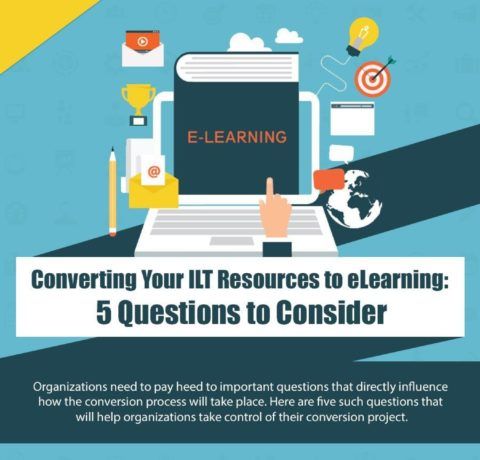Blended Learning 2015: What Does It Look Like? Infographic
Blended learning has grown increasingly popular in the corporate training arena in recent years. With so much technology now available to us, blended learning models can include a number of different methods of learning.
The Blended Learning 2015: What does it look like? Infographic was designed by Interactive Services based on the results of research carried out in 2014. The infographic highlights survey-driven data obtained from senior learning professionals across multiple industries about their views on the topic of blended learning and what they believe the future of learning looks like.
Measure of Success
With an annual training spend of over $140 billion in North America alone, why is so little data available on Return on Investment (RoI) on training? Organizations that measure the impact of their training dollars are few and far between. Is this due to lack of resources, or the unwillingness of a business to acknowledge the inefficacy of its current training model? Who cares if training fails? And what is the opportunity for L&D if we can prove that it works?
What did our research tell us?
- Only 28% of organizations measure training against business KPIs.
- Learner-driven evaluation is the most utilized form of training evaluation.
- Only 20% of organizations invite external evaluation of training.
- Control groups are utilized by only 20% of organizations.
What methods does your organization use to measure training effectiveness?
- Happy sheets
- Online surveys
- Control groups
- KPI link
- Structured interviews
- Management feedback
- Compliants
- Coaching
- Supervisor assessment
- External audit/analysis
What you said...
- The metric leadership wants is RoI, but we measure money saved, not impact on the P&L.
- We are good at designing training, but not so hot at proving its effectiveness.
- Internal teams are shrinking. If I have to choose, I’d rather have a developer than an analyst on my team.
Mobile
Most organizations we spoke to deployed some kind of mobile learning project in 2014. The majority of these projects were tablet based, with only a few use cases involving mobile phones. While e-learning made up the majority of these projects, other formats like video, audio, and workbooks saw a revival. Being able to access these materials while offline was seen as a big plus. Infrastructure and device compatibility were the main hurdles to deployment. So how do we make the most of mobile?
What the data said...
Clients felt that tablet-based learning (75%) was a good use of budget. Only (48%) said the same about phone-based learning. Infrastructure and technology was the biggest hurdle to deploying tablet-based learning (45%). However, evidence of impact was listed (30%) as the main hurdle to deploying phone-based learning.
What you said...
- Right now, mobile is only for flagship projects.
- If you want to get mobile accepted, get a program developed for the exec audience and let it trickle down from there.
- We saved a million dollars in printing costs this year by moving two workbook programs to tablet delivery.
Video
Video is recognized as an increasingly important training method. However, the way video is produced and digested is changing. The rise of YouTube, Instagram, and Vine has legitimized the development and inclusion of user-generated video and ‘low-cost’ video. Additionally, the increase in mobile and tablet-based learning appears to be linked to an increase in the use of video.
What the data said...
- 90% of clients consider video to be good value for money.
- 25% of clients said the biggest hurdle to introducing more video is cost.
- Video is perceived by 50% of L&D to perform well and 30% say it’s currently underutilized.
What you said...
- Traditional broadcast quality is perceived as ‘too slick’ for our users these days.
- The financial and expertize barrier to entry is disappearing for video kit.
- We still have infrastructure issues. Our video is not reaching as far as we would like.
Gamification
Gamification can be broadly separated into two broad areas:
- Traditional learning programs where gamification elements were used to make the experience more engaging.
- Programs designed to simulate and practice a task, sometimes repetitively.
What you said...
- The exec. population is skeptical – they think gamification trivializes the subject.
- It costs too much and takes too long. I need quicker results.
- It’s hard to visualize the end result for the client during the early stage design; they usually default to something less challenging.
MOOCs
MOOCs are still considered experimental in their organizations. MOOCs offer great potential, but the right model for implementation and management has not yet been developed. Issues of scope definition and resource ownership mean that long-term curation and management of the MOOC is contentious.
What the data said...
- Only 25% of respondents have attempted to implement a MOOC while almost 40% of respondents said their organization has no appetite to look at MOOCs in 2015.
- Evidence of impact is seen as the top barrier to implementation (33%).
- 65% of clients feel MOOCs are a poor use of budget in 2015.
What you said...
- MOOCs appealed to us because we were going with a ‘no money, no people strategy’ due to the crisis, but it turned out to be more work than we anticipated.
- For CPD it worked well. It’s great for structuring a repository.
- If the quality dips then people turn off quite quickly.
For more information read the Blended Learning 2015 - Future of Learning Whitepaper by Interactive Services.







You can adjust your cookie preferences here.